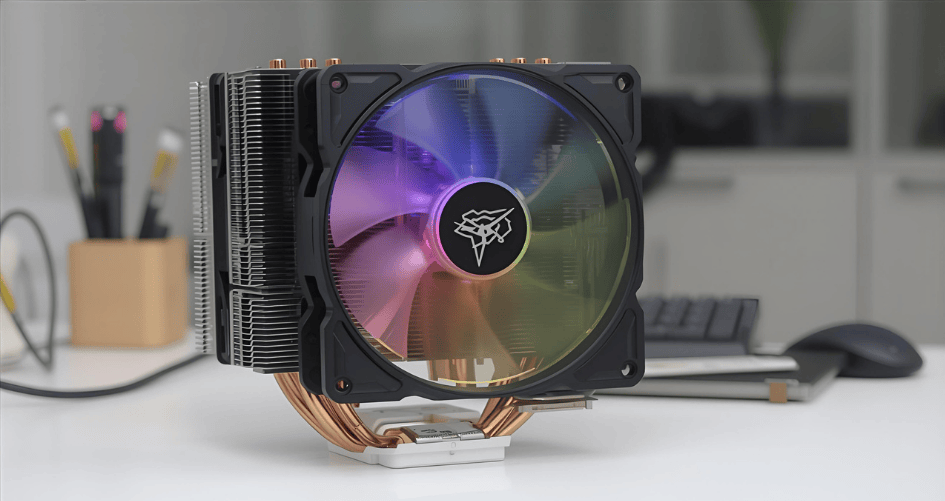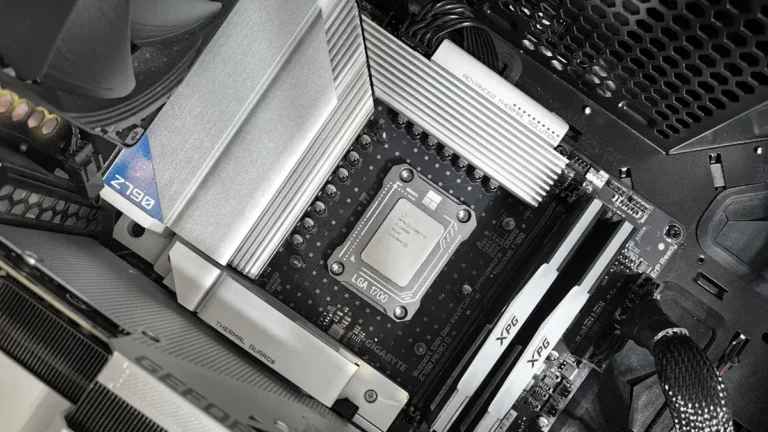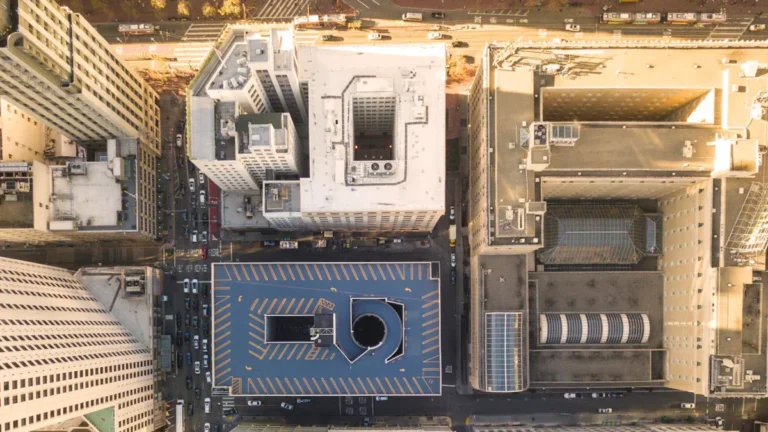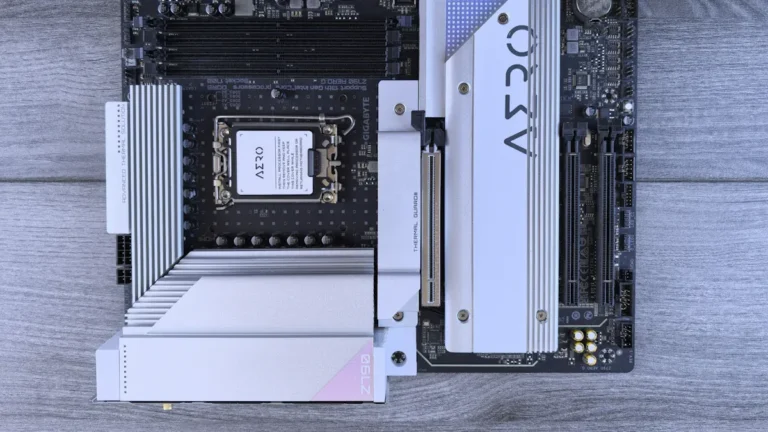Modern computers make more heat than before. CPUs work faster and move more data now. This extra heat needs better cooling. A cpu cooler keeps the processor cool and safe. Old computers used only simple fans. Today, we have advanced liquid cooling systems. New ideas help cool computers better and make them last longer. Cooling systems keep hardware safe and working well. Many people want the best cpu cooler for their computers. To learn more about cooling, go to www.sz-xtt.com.
Key Takeaways
· CPU coolers stop processors from getting too hot. This helps computers work better and last longer.
· Air cooling uses fans and metal fins to move heat away. It works well for most computers people use every day.
· Liquid cooling uses pumps and liquid to take away more heat. It is best for gaming and strong computers.
· AIO liquid coolers put all the parts in one unit. This makes liquid cooling easy and safe to set up.
· Picking the right cooler depends on how much heat the CPU makes. It also depends on the case size, noise you like, and your money.
· Cleaning coolers often stops dust from building up. This keeps cooling working well.
· Good cooling makes less noise and stops computers from turning off. It also keeps computer parts safe from harm.
· Data centers use special cooling like liquid and immersion cooling. These help many servers stay safe and cool.
CPU Cooler Basics
What Is a CPU Cooler
A cpu cooler is a device that helps remove heat from a computer’s processor. The processor, or CPU, works hard and creates a lot of heat during operation. If the heat stays around the CPU, it can cause problems. The cpu cooler uses different methods to move heat away from the processor. This process is called heat dissipation. Good heat dissipation keeps the CPU at a safe temperature. Most computers cannot run well without a cpu cooler. Some coolers use air, while others use liquid.
Why Cooling Matters
Cooling is important for every computer. When a CPU gets too hot, it can slow down or even stop working. High heat can damage the processor and other parts. Heat dissipation protects the computer from these risks. A good cooling system helps the CPU work faster and last longer. Many people notice better performance when their computers stay cool. Cooling also helps prevent sudden shutdowns. Reliable heat dissipation means fewer repairs and longer life for the computer.
Tip: Always check if your cpu cooler is working well. Overheating can cause data loss or hardware failure.
Types of Cooling Systems
There are several types of cooling systems for computers. The most common type is air cooling. Air cooling uses fans and metal fins to move heat away from the CPU. The fans blow air over the fins, which helps with heat dissipation. Air cooling is simple and works well for many users.
Another type is liquid cooling. Liquid cooling uses a pump to move liquid through tubes and a radiator. The liquid absorbs heat from the CPU and moves it to the radiator, where it cools down. This method can handle more heat than air cooling. Some people use custom liquid cooling systems for better results.
| Cooling System | How It Works | Best For |
| Air Cooling | Uses fans and fins | Everyday computers |
| Liquid Cooling | Uses liquid and radiator | High-performance PCs |
Both air and liquid cooling help with heat dissipation. Users can choose the best system for their needs. For more information about cooling solutions, visit www.sz-xtt.com.
Evolution of CPU Coolers
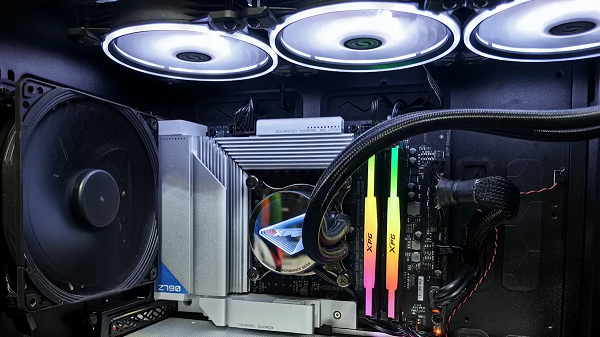
Early Air Cooling
Early computers used simple air cooling. Engineers put small fans and metal heatsinks on CPUs. The fans blew air over the heatsinks. This helped move heat away from the processor. This worked well for early personal computers. CPUs did not make much heat back then. As processors got faster, they made more heat. Air cooling had to get better. Companies made bigger heatsinks and stronger fans. Some used copper to move heat better. Air cooling stayed popular for many years. It was easy to use and did not cost much.
Rise of Liquid Cooling
As technology improved, CPUs got even hotter. Air cooling could not always handle the extra heat. This led to liquid cooling becoming more common. Engineers got ideas from cars, where liquid cools engines. In computers, liquid cooling uses a pump and tubes. The liquid takes heat from the CPU to a radiator. The radiator lets the heat out into the air. This cools the CPU better than air alone. Gamers and people with fast computers liked liquid cooling. It also made computers quieter. It did not need big, loud fans. Some companies used liquid immersion cooling. The whole computer sits in a special liquid. This cools powerful servers and data centers even more. Liquid cooling was a big step forward. It showed how new ideas can solve tough problems.
Evolution of AIO Liquid CPU Coolers
The next big change was aio liquid cpu coolers. These coolers made liquid cooling easy for everyone. An aio liquid cpu cooler is one unit. It has a pump, tubes, and a radiator together. Users do not need to build their own loops. They do not have to worry about leaks. Aio liquid cpu coolers made advanced cooling simple and safe. Many people use them for gaming PCs and work computers. These coolers work well and are easy to set up. They show how cooling keeps getting better. Companies keep making new designs and smarter pumps. The future may bring even more changes. Cooling needs will keep growing. For more about new cooling solutions, visit www.sz-xtt.com.
Note: The evolution of cpu coolers shows that new ideas are important for modern technology.
Air Cooling Systems
How Air Cooling Works
Air cooling uses fans and metal fins to keep a computer’s CPU at a safe temperature. The system places a heatsink on top of the processor. The heatsink has many thin fins that increase the surface area. A fan blows air over these fins. This process helps move heat away from the CPU. The moving air carries the heat out of the computer case. Good air cooling systems improve heat dissipation and keep the processor running smoothly. Many people choose air cooling because it is simple and reliable.
Tip: Clean the fans and heatsinks often. Dust can block airflow and reduce cooling performance.
Pros and Cons
Air cooling offers several advantages and some disadvantages. Here is a quick look:
| Pros | Cons |
| Easy to install | Can be noisy |
| Affordable | Takes up more space |
| Reliable for most computers | Less effective for high-end CPUs |
Air cooling works well for many users. It does not need much maintenance. Most systems last a long time. Some models can get loud, especially when the CPU works hard. Large heatsinks may not fit in smaller cases. For most everyday tasks, air cooling provides enough heat dissipation.
Best Use Cases
Air cooling fits many situations. People use it in home computers, office desktops, and even some gaming PCs. It works best for:
· Standard office work
· Web browsing and streaming
· Entry-level gaming
· Budget-friendly builds
Gamers with powerful CPUs may need stronger cooling. For most users, air cooling gives a good balance of cost and performance. Those who want a simple solution often pick air cooling. To explore more options, visit www.sz-xtt.com for helpful information.
Liquid Cooling Systems
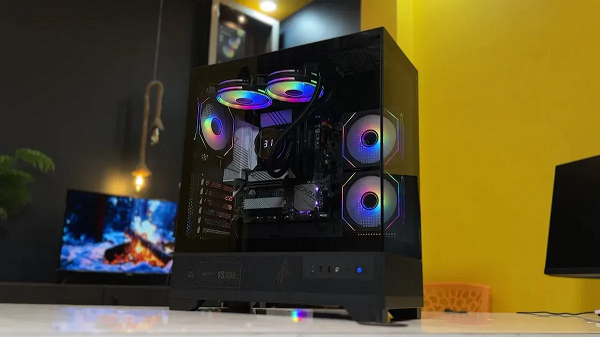
How Liquid Cooling Works
A liquid cooling system uses a special process to keep a computer’s CPU cool. The system has a pump, tubes, a radiator, and a cooling block. The pump moves liquid through the tubes. The liquid flows over the CPU in the cooling block. It picks up heat from the processor. The heated liquid then travels to the radiator. The radiator has fans that blow air over it. This helps with heat dissipation. The liquid cools down and returns to the CPU to repeat the cycle. This method removes more heat than air cooling. Many people use liquid cooling for high-performance computers.
Note: Liquid cooling can keep CPUs at lower temperatures, which helps them run faster and last longer.
AIO Liquid CPU Coolers
AIO liquid cpu coolers make liquid cooling easy for everyone. “AIO” stands for “All-In-One.” These coolers come as a single unit. They include a pump, tubes, radiator, and cooling block already connected. Users do not need to build or fill the system. They only need to attach the aio liquid cpu coolers to the CPU and the case. This makes installation simple and quick. Many gamers and professionals choose aio liquid cpu coolers for their computers. These coolers offer strong heat dissipation and quiet operation. Some models have lights and smart controls. Aio liquid cpu coolers fit many types of computer cases. They work well for both beginners and experts. People who want reliable cooling often pick aio liquid cpu coolers. For more information about aio liquid cpu coolers, visit www.sz-xtt.com.
Custom Loops
Custom loops give users more control over their liquid cooling. In a custom loop, the user chooses each part. They pick the pump, tubes, radiator, and cooling block. Some even add extra parts to cool other components, like the graphics card. Custom loops can use different types of liquid. Users can select colors or add special effects. These systems offer the best cooling performance. They also allow for creative designs. Building a custom loop takes more time and skill. People who want the best cooling often choose this option. Custom loops can handle very high heat from powerful CPUs. They also provide excellent heat dissipation for demanding tasks.
Tip: Custom loops need regular checks to keep the liquid clean and the system running well.
Pros and Cons
Liquid cooling is now popular with many computer users. These systems cool powerful CPUs very well. People pick liquid cooling for better performance and less noise. Here are the main pros and cons of liquid cooling, including aio liquid cpu coolers.
Pros
· Liquid cooling removes more heat than air cooling. This keeps CPUs cooler.
· Aio liquid cpu coolers are simple to install. Users do not need to build custom loops or worry about leaks.
· Many aio liquid cpu coolers are quiet. Their fans and pumps make less noise than big air coolers.
· Liquid cooling helps CPUs last longer. Cooler parts wear out slower.
· Some aio liquid cpu coolers have lights and smart controls. These let users change how their computers look.
Cons
· Liquid cooling costs more than air cooling. Aio liquid cpu coolers are often pricier than basic fans.
· Some aio liquid cpu coolers need more room in the case. Users must check if their case can fit the cooler.
· Liquid cooling may need more care. Users should check the pump and fans to keep things working.
Note: Aio liquid cpu coolers are easy to use and work well. They are a good choice for people who want strong cooling without building a custom loop.
| Feature | Liquid Cooling | AIO Liquid CPU Coolers |
| Cooling Power | Very High | High |
| Noise Level | Low | Low |
| Installation | Complex (custom) | Easy |
| Maintenance | Regular (custom) | Low |
| Cost | Higher | Moderate to High |
Liquid cooling, especially with aio liquid cpu coolers, keeps computers cool and quiet. These systems are great for gaming, work, and other tough jobs. For more about liquid cooling and aio liquid cpu coolers, visit www.sz-xtt.com.
Comparing Cooling Systems
Performance
Performance is very important when picking a cpu cooler. Air cooling uses fans and metal fins to move heat away. These coolers work well for most daily computers. They keep the cpu cool during simple tasks like web browsing or office work. Liquid cooling uses pumps and liquid to move heat away. These coolers can handle more heat than air coolers. Gamers and professionals often pick liquid cooling for strong computers. Liquid cooling keeps cpus cooler, even with heavy programs or games. This makes cooling better and helps computers run fast for longer. Some people want even better cooling. They pick smart cooling systems that change fan speed or pump power when the cpu gets hot. These systems help manage heat for home and business computers.
Note: The right cooler helps a cpu run at full speed without getting too hot.
Noise
Noise is important to many people. Air coolers are often louder because they use big fans. When the cpu works hard, the fans spin faster and get louder. Some air coolers are made to be quieter, but most still hum. Liquid cooling is usually quieter. The pump and fans in liquid cooling make less noise than big air coolers. Many people notice their computer is quieter with liquid cooling. This makes liquid cooling good for quiet places like offices or homes. Smart cooling systems also help control noise. They change fan speed when the cpu gets hot. When the computer is not busy, the fans slow down and make less noise.
| Cooling System | Typical Noise Level | Best For |
| Air Cooling | Moderate to High | Everyday use, budget PCs |
| Liquid Cooling | Low to Moderate | Gaming, quiet workspaces |
| Smart Cooling | Low (adaptive) | Offices, studios |
Installation
Installation can be easy or hard, depending on the cooler. Air coolers are easy to put in. Most people can attach a fan and heatsink with simple tools. Air coolers fit in many cases and do not need much setup. Liquid cooling takes more time to install. AIO liquid coolers come as one piece. Users just attach the cooler to the cpu and case. Custom liquid cooling needs more steps. Users must connect tubes, pumps, and radiators. This takes skill and patience. Smart cooling systems use sensors and software. These systems may need extra setup on the computer. Some people find this easy, but others may need help.
Tip: Always check your computer case size before buying a new cooler. Some coolers need more space than others.
For more about installation and product choices, visit www.sz-xtt.com.
Cost
Cost plays a big role when people choose a CPU cooler. Air cooling systems usually cost less than liquid cooling systems. Most air coolers use simple parts like fans and metal heatsinks. These parts do not cost much to make. Many users find air coolers in stores for a low price. Air cooling works well for people who want to save money.
Liquid cooling systems cost more. These systems use pumps, tubes, radiators, and special liquids. All-in-one (AIO) liquid coolers come as a single unit, but they still cost more than most air coolers. Custom liquid cooling systems cost even more because users buy each part by itself. Some people pay extra for special lights or smart controls.
Here is a table to show the cost differences:
| Cooling System | Average Price Range | Who Should Choose It? |
| Air Cooling | $20 – $80 | Budget users, basic computers |
| AIO Liquid Cooling | $60 – $200 | Gamers, professionals |
| Custom Liquid Loop | $150 and up | Enthusiasts, overclockers |
People should think about their budget before buying a cooler. Air coolers fit most budgets and work for many computers. Liquid coolers cost more but give better cooling for powerful CPUs. Some users want the best performance and choose custom loops, even if the price is high.
Tip: Users can visit www.sz-xtt.com to compare prices and find a cooler that fits their needs.
Choosing a CPU Cooler
Key Factors
Picking the right cpu cooler depends on a few things. First, users should check if the cooler fits in their computer case. Some coolers are big and need more space. This is true for large air coolers and liquid cooling systems. The cpu type is also important. Powerful cpus make more heat and need better cooling. Users should look at the thermal design power, or TDP, of their cpu. The cooler must handle at least that much heat.
Noise is another thing to think about. Some people want a quiet computer for work or school. Others do not mind some noise if it means better cooling. Price matters too. Air coolers usually cost less than liquid coolers. Users should also think about how hard it is to put in the cooler. Some coolers are easy to install, but others take more skill.
Tip: Always make sure the cooler works with your motherboard and case before you buy it.
Gaming PCs
Gaming pcs use strong cpus and graphics cards. These parts get hot during long games. Gaming needs good cooling to keep things running well. Many gamers pick liquid cooling for better temperature control. Aio liquid coolers are popular because they are easy to set up and work well.
Some gamers still use big air coolers. These are good for mid-range gaming pcs. For overclocking, liquid cooling is often best. It keeps the cpu cool even when it runs faster. Gamers also care about how their pc looks. Some coolers have rgb lights and cool designs.
Here is a table to compare choices:
| Cooler Type | Best For | Noise Level | Installation |
| Air Cooler | Mid-range gaming PCs | Moderate | Easy |
| AIO Liquid Cooler | High-end gaming PCs | Low | Moderate |
For more about gaming cooling, users can visit www.sz-xtt.com.
Workstations
Workstations do jobs like video editing, 3d modeling, and science work. These jobs use powerful cpus and run for a long time. A workstation needs a good cooler to keep the cpu safe and fast. Many workstations use liquid cooling for better heat control. Some use big air coolers if there is enough space.
Servers in workstations also need strong cooling. A server may run all day and handle lots of data. Good cooling stops slowdowns and keeps hardware safe. Data center cooling ideas sometimes help with workstation designs. These ideas move heat away fast and keep everything cool.
Note: Good cooling helps workstations last longer and work better.
People who build or upgrade workstations should check what cooling their cpu and server need. For more help and product guides, www.sz-xtt.com has useful info.
Data Centers
Data centers need strong cooling systems to keep servers running safely. These places hold many computers in one building. Each server works hard and makes a lot of heat. If the heat stays, the computers can slow down or break. Good cooling helps every server work better and last longer.
Data center cooling uses special designs. Many data centers use rows of racks filled with servers. These racks sit close together. High-density data centers put even more servers in the same space. This setup saves room but makes more heat. The cooling system must move this heat away fast.
There are several ways to cool a data center. The most common way uses cold air. Fans blow cool air through the racks. The air picks up heat from each server and moves it out of the building. Some data centers use raised floors. Cool air comes up from the floor and passes over the servers. Hot air rises and leaves through vents at the top.
Liquid cooling is another choice. Some data centers use water or special liquids to take heat away from the servers. Pipes carry the liquid close to the hot parts. The liquid absorbs the heat and moves it outside. This method works well for server cooling in places with lots of computers. It also saves energy.
Immersion cooling is a new idea. In this system, servers sit in a tank filled with a safe liquid. The liquid takes heat away from every part of the server. This method works well for high-density data centers. It keeps the computers cool and uses less power.
Choosing the right cooling system for a data center depends on many things. The size of the building, the number of servers, and the amount of heat all matter. Some data centers need simple air cooling. Others need advanced liquid or immersion cooling. The goal is always the same: keep every server safe and working.
Tip: Data center managers should check the cooling system often. Clean fans and filters help the system work better.
For more information about data center cooling and server cooling solutions, visit www.sz-xtt.com. This site has guides and products for every type of data center.
CPU coolers are very important in today’s technology. They stop processors from getting too hot. This helps computers work well and not break. Everyone should pick a cooling system that matches what they need. Some people use air cooling. Others need liquid cooling for their computers. You can learn more and see products at www.sz-xtt.com.
New cooling ideas will help computers stay safe and fast. Keep learning so your devices work their best.
FAQ
What does a CPU cooler do?
A CPU cooler moves heat away from the processor. This keeps the CPU at a safe temperature. Good cooling helps the computer run faster and last longer.
How can someone tell if their CPU is overheating?
The computer may slow down or shut off without warning. Users might hear loud fans. Some computers show a warning message. Checking CPU temperature with software helps too.
Is liquid cooling better than air cooling?
Liquid cooling removes more heat than air cooling. It works well for gaming and high-performance computers. Air cooling fits most basic computers. Users should choose based on their needs.
How often should someone clean their CPU cooler?
People should clean their CPU cooler every three to six months. Dust can block airflow and lower cooling power. Use a soft brush or air blower for best results.
Can anyone install a CPU cooler by themselves?
Most people can install a CPU cooler with simple tools. Air coolers are easier to install. AIO liquid coolers need a bit more care. Always follow the instructions in the manual.
Where can users find more information or buy CPU coolers?
Users can visit www.sz-xtt.com for more details, guides, and product choices. The site offers help for picking the right cooler for any computer.
Do all computers need a special CPU cooler?
Every computer needs a CPU cooler. Basic computers use simple air coolers. Gaming PCs and workstations may need stronger cooling. The right cooler depends on how much heat the CPU makes.
What happens if someone uses the wrong size cooler?
A cooler that is too big may not fit in the case. A cooler that is too small may not cool the CPU enough. Always check the size before buying.
